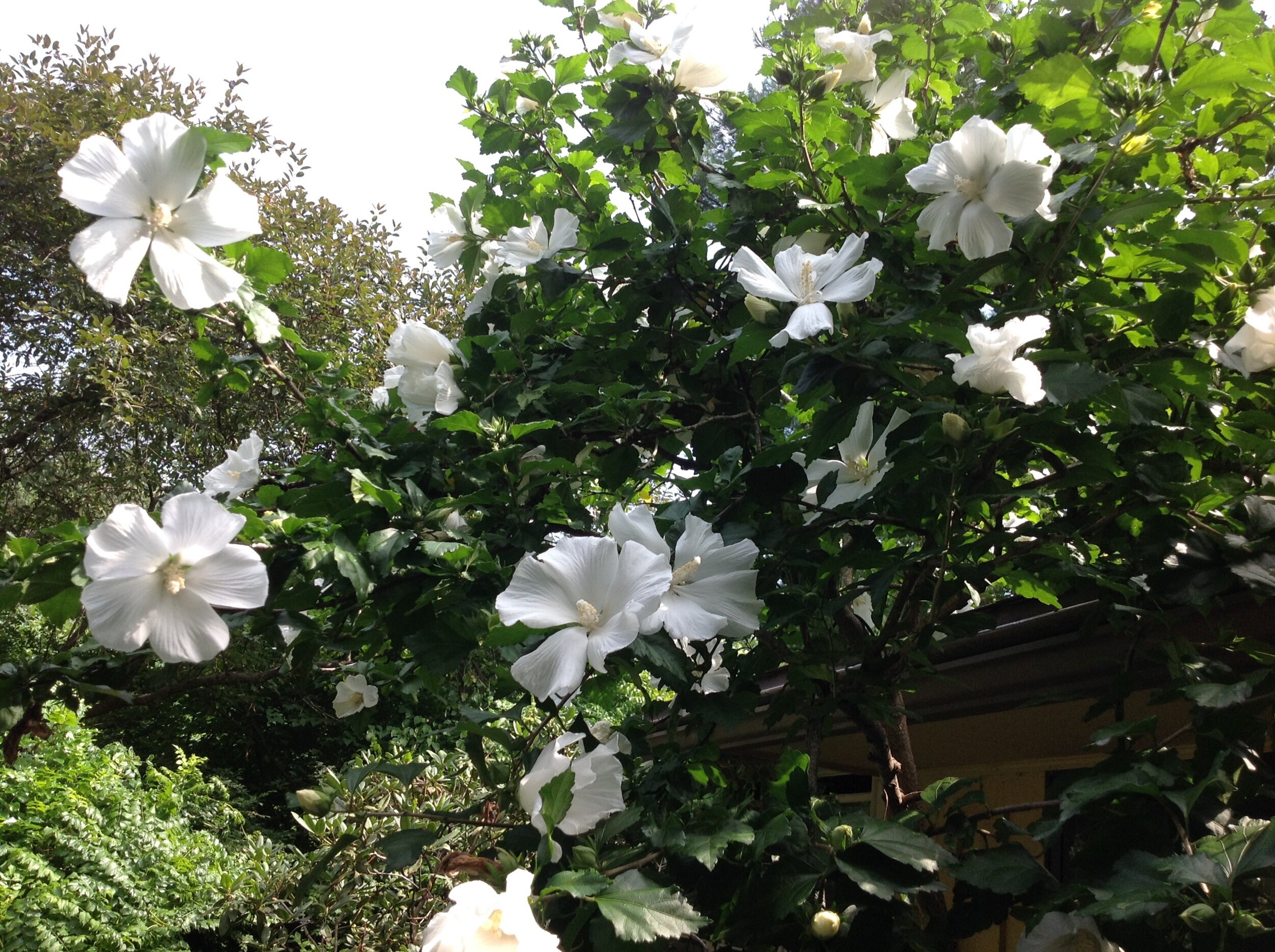Nota Bene: when Squarespace did a radical update for their app, I lost track of things, like the Comment possibility, and I acquired numerous other possibilities most of which I do not understand. In the past, if someone left a comment, my gmail also informed me. That does not seem to happen now, so, I have recently found that there may be comments that I have missed. If so, let me know by gmail and I shall return to the entry. Also, the last “old” comment I found, I tried to respond to it, though my response went somewhere else, I think. I seemed to end up in wine country, but it was 4 a.m., so who knows where my comment on the comment went. In any case off to the next segment in the unfolding salvation story. If anyone is still with me, thanks for your interest and patience. les 80
I have been thinking about the role of the Bible in my story for some time, and finally decided I should attempt to explain that role in a somewhat coherent and systematic way. I described what happened with the prayer at the kitchen table, and the way the prayer became the “way in,” so to speak. I should also explain that I believe the Bible to be the inspired word of God; therefore, a source of divine and spiritual truth, a revelation from God through human agency. The Bible is also, I think, a library, containing various kinds of writings or genres: historical narratives, myths and legends, poetry (Psalms), prophetic writings, letters, gospels, etc. Understanding what a text means begins with understanding the kind of text it is. That having been said, what I intend to do here is identify certain passages that have become central in my own spiritual journey away from the kitchen table and into the heart of what my Christian experience means.
The first passage I discovered early on and it is a text I always return to when doubt seems to overwhelm me. You might say that the passage begins in the Gospel of Mark, right at the center or turning point of Mark’s narrative. Just before the central question, Jesus is confronted with a blind man, whom “some people” “begged” Jesus to touch. Jesus gives the touching a try, but the restoration doesn’t quite work the first time: The partially healed man says, “I see men but they look like trees walking.” Jesus then lays his hands on the man’s eyes; this time the man’s vision is restored.
Who is Jesus? Seeing who Jesus is is extremely difficult for the characters in Mark. Jesus asks the disciples, “Who do men say that I am?” Jesus gets various answers, none of them correct. Even the disciples are somewhat befuddled, as usual in Mark, until Jesus asks them point blank: “Who do you say that I am?” Peter (immediately, one of Mark’s favorite modifiers) gives the right answer, the answer that has been before us the entire time in Mark, but that no one except the demons seem to get: “You are the Christ.” Jesus then (immediately) tells the disciples about the rejection and the suffering that is to come. Peter, of course, takes Jesus aside and starts to rebuke him, to which Jesus responds with the well-known: “Get behind me, Satan! For you are not on the side of God, but of men.” Seeing and not seeing; God’s side and man’s side. Seeing with God’s eyes, or seeing as blind humanity sees? At this point in the narrative Jesus calls to him the multitude and the disciples and introduces the awful instrument of torture, the cross, into the narrative and explains precisely the cost of following him. Switch now to Matthew who recounts the same narrative, almost. What Matthew adds to the encounter is crucial, I think.
In Matthew 16: 13-20, the question is a little different: “Who do men say that the Son of man is?” The series of wrong answers is almost the same: “John the Baptist, Elijah, Jeremiah.” When he turns to the disciples, “But who do you say that I am?” Simon Peter replies, “You are the Christ, the Son of the living God.” Jesus’ response is at the heart of the mystery: “Blessed are you, Simon Bar-Jona! For flesh and blood has not revealed this to you, but my Father who is in heaven.” Wow! There are two kinds of knowledge, things we can know on our own, “flesh and blood” knowledge, and knowledge that must be revealed to us from the Father who is in heaven, spiritual knowledge that Jesus is who he claims to be, the unique Son of God, the second person of the Trinity: “before Abraham was I Am” (John).
In the string of secondary causes in my life regarding my relationship with God, the most significant Biblical one is here, Matthew 16. As if to solidify the centrality of this passage, when I started teaching American lit 1 at Berea, my Norton Anthology contained two sermons by Jonathan Edwards, “Sinners in the Hands of an Angry God,” the English teacher’s favorite for its vivid, terrifying images of the sinner bound for Hell, [no need to take the substance seriously any more, obviously, they say], and Edwards’ “The Divine and Supernatural Light,” a sermon that essentially and systematically, based on the Matthew 16 text, describes and defines precisely the nature of the conversion experience. When I read his sermon the first time, it was as if he was describing my kitchen table revelation. And, before we get to Edwards, I would state that I simply could never deny the truth about Christ that I acquired at the kitchen table in 1964 or 5. Before that revelatory moment, I did not believe that Christ was the Son of God or that his resurrection was real; after that moment I could never deny that that’s who Christ is and that that’s what truly happened, the bodily resurrection from the dead, knowledge I affirm every time I recite the Nicene Creed during the Mass.
I looked for a copy of Edwards’ sermon in my reduced library, and I could not find one. Disappointing. At one time I read everything by or about Edwards that I could find. The “Sinners” sermon seems to be the exception; he was not a “Hell-fire and Damnation” preacher, really. He was a brilliant man and preacher who was genuinely concerned with understanding the meaning of conversion and of understanding the centrality of man’s relationship with Christ, thus the importance of the “Divine and Supernatural Light” as defining the role of the Holy Spirit in the conversion experience. For Edwards the key point in the Biblical text is that this saving affirmation, Jesus is Lord, is not knowledge that the human being could acquire on his or her own; it is knowledge that comes directly from God, without a secondary cause. You must have the Biblical account in your mind, but only God’s presence can cause you truly to know it, to affirm it.
Edwards first defines four experiences that are not the divine light: the light is not conscience; it is not imagination, as though you literally saw something with your eyes; it is not any new truth or proposition; and it is not simply an emotional response to the Jesus story, or to the sufferings that he underwent.
Edwards begins the second section with his positive definition of the Spiritual Light: “it may be thus described: a true sense of the divine excellency of the things revealed in the Word of God, and a conviction of the truth and reality of them, thence arising.” For Edwards we might say that the heart comes first, experiencing the presence of God: “He that is spiritually enlightened truly apprehends and sees it, or has a sense of it.” The mind or reason comes second: “He don’t merely rationally believe that God is glorious, but he has a sense of the gloriousness of God in his heart.” In order to clarify what he means by sense and reason in the experience, he further gives us a marvelous analogy: “There is a difference between having a rational judgment that honey is sweet, and having a sense of its sweetness. A man may have the former, that knows not how honey tastes; but a man can’t have the latter, unless he has an idea of the taste of honey in his mind.” Edwards then gives us a second clarifying analogy that is also apt: “So there is a difference between believing that a person is beautiful, and having a sense of his beauty. The former may be obtained by hearsay, but the latter only by seeing the countenance.”
It is worth seeing how he further develops the distinction: “There is a wide difference between mere speculative, rational judging anything to be excellent, and having a sense of its sweetness, and beauty. The former rests only in the head, speculation only is concerned in it; but the heart is concerned in the latter.” For Edwards the experience of God comes first, the sense of God’s presence, the taste of honey, so to speak. What arises from that experience, according to Edwards, is “a conviction of the truth and reality” of that which is “contained in the Word of God.” The way Edwards continues to develop his description of what happens in this experience is well worth reading; however, early on in the sermon he says something which always stayed with me: “He may indeed act upon the mind of a natural man; but he acts in the mind of a saint as an indwelling vital principle….he unites himself with the mind of a saint, takes him for his temple, actuates and influences him as a new, supernatural principle of life and action.”
The text of Edwards’ sermon comes from The Sermons of Jonathan Edwards: A Reader, Edited by Wilson H. Kimnach, Kenneth P. Minkema, & Douglas A. Sweeney. Yale University Press: New Haven & London, 1999.
Matthew 16
This image from EWTN somehow seemed apt since we are essentially dealing with the actions of the Holy Spirit.


























![“I have told the glad news of deliverance in the great congregation.” (Ps. 40:9). [Bonus: beauty and the bug!]. Amen!](https://images.squarespace-cdn.com/content/v1/53d5a87ee4b0a249c01150f9/1595439938699-Q2EH28T9CZ3A79AHKSKU/IMG_1399.jpeg)
![Simon, my almost constant companion, in the great chair. [My iPad wanted to write “congregation” for companion.]](https://images.squarespace-cdn.com/content/v1/53d5a87ee4b0a249c01150f9/1595440444792-OMPM39KOQ8ST29TE0FWD/IMG_0074.jpeg)








